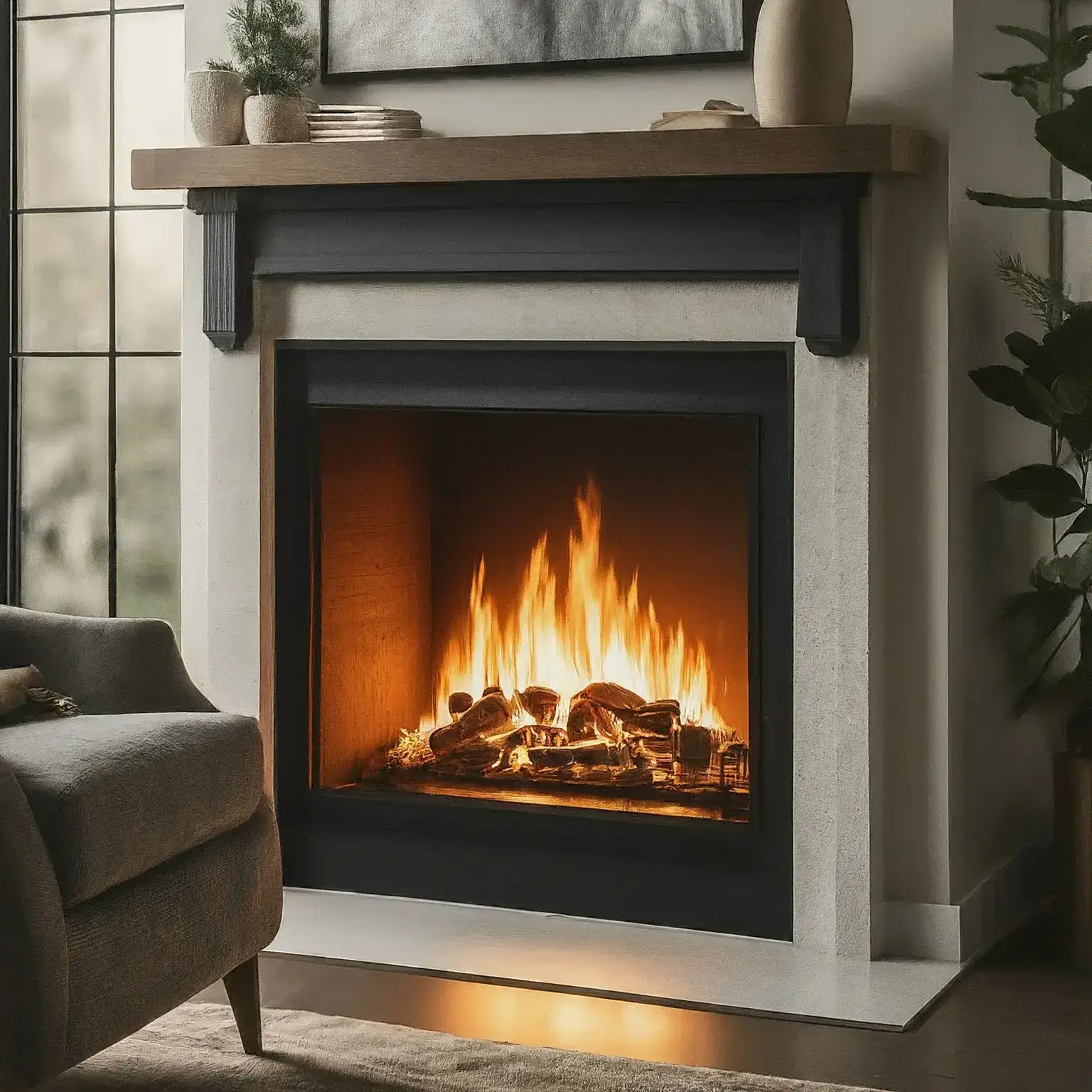A fireplace not only adds warmth but also creates a charming ambiance in any room. As the temperature drops, a simple flip of a switch can bring a gas fireplace to life, filling your living space with a cozy and inviting fire.
But, the question remains: Can a gas fireplace truly provide enough heat to warm your entire home? Let’s examine the details.
While a gas fireplace can elevate a home’s ambient temperature, it typically falls short of providing enough warmth to fully heat an entire residence.
Most gas fireplaces are designed to heat spaces ranging from 500 to 1000 square feet, which is considerably less than the average size of a home at 2300 square feet. As a result, gas fireplaces are generally considered supplementary heating sources.
If you’re considering relying on a gas fireplace to heat your living space, there are important factors to keep in mind.
In this article, we’ll delve into whether a gas fireplace can truly meet the heating needs of your home. The answer might surprise you, so read on to gain a deeper understanding of this topic.
Can a Gas Fireplace Be Your Main Heat Source?
Typically, a gas fireplace is considered a supplementary heat source. Most homes rely on a primary heating system, such as central air, baseboard, or sectioned electric heating. However, in certain cases, a gas fireplace can effectively heat a home, especially if the square footage aligns with the fireplace’s rating. Most gas fireplaces on the market have a square footage rating ranging from 500 to 1,000 square feet.
Factors to Consider:
Insulation Quality: The level of insulation in your space plays a crucial role. Well-insulated homes retain heat more efficiently.
Ceiling Height: Taller ceilings may result in heat rising before evenly distributing across the room.
Home Layout: Open-concept floorplans tend to allow heat to flow more freely compared to segmented layouts.
However, walls and multiple floors can impede the efficient spread of heat. In rooms with enclosed spaces, the heat may be contained rather than dispersed throughout the home.
Consider a Scenario: Imagine a one-story, open-concept home with regular-height ceilings spanning 950 square feet. In this case, a medium gas fireplace with a 1,000-square-foot heating capacity could potentially serve as the main heating source for the entire space.
Remember, every home is unique, and various factors influence the effectiveness of a gas fireplace as a primary heat source. Explore the possibilities with HomeDekkor!
Can a Gas Fireplace Serve as Your Main Heat Source?
Determining if a gas fireplace can be your primary heat source depends on two key factors: the square footage of your home and the layout of your space.
Gas fireplaces are rated based on their British Thermal Unit (BTU) output, which measures heat production. This same unit of measurement is used for appliances like air conditioners when assessing cooling capacity.
For instance, a gas fireplace with a BTU output of 32,000 can effectively heat an area of approximately 1,100 square feet. On the other hand, a smaller fireplace with an output of 15,000 BTUs is suitable for heating up to 600 square feet of space.
Does Relying on a Gas Fireplace as Your Main Heat Source Affect Home Insurance?
Generally, insurance companies prefer homes to have a central or primary heat source to provide coverage. Since gas fireplaces aren’t classified as primary or central heating systems, finding a policy that covers a home primarily heated by a gas fireplace can be more challenging and may come at a higher cost.
The reason behind this preference is simple: a central heat source helps reduce the risk of potential losses. In colder climates, homes without adequate heating are at risk of frozen pipes, which can lead to costly water damage.
If your home already has a central heating system in addition to a gas fireplace, you’re less likely to encounter insurance issues. This means that even if you choose to primarily use the gas fireplace for heating, your home is equipped with a reliable alternative source of warmth.
Boosting Heat Output from Your Gas Fireplace: Tips and Tricks

Opt for a Direct Vent Fireplace: Consider choosing a glass-fronted direct vent system for optimal efficiency. These systems utilize vented air to fuel the flame, preventing the loss of room air. Additionally, the glass panel radiates heat while keeping room air from escaping through the vent.
Utilize a Fireplace Blower: A gas fireplace equipped with a blower can significantly increase heat output. The blower efficiently pushes warm air into the room, ensuring a cozier atmosphere.
Install a Fireback: A fireback, typically made of metal, is placed at the back of the fireplace. As it absorbs heat from the flame, it radiates warmth into the room, providing an extra source of heat.
Manage the Damper (for Insert Fireplaces): If your gas fireplace is an insert within a traditional fireplace, it likely has a damper. When the fireplace is not in use, closing the top-mounted damper prevents unnecessary heat loss from the room.
Remember, do not close the damper if your gas fireplace has a vent system and is in use. The vent needs to remain open to exhaust smoke and gas from the fireplace during operation safely.
Related: Damper are they necessary
Gas Fireplace vs. Furnace: Which is More Efficient for Heating?
Gas Fireplace Efficiency:
A gas fireplace excels at heating the room it’s located in, providing a cozy and inviting atmosphere.
However, it’s important to note that gas fireplaces generally serve as supplemental heat sources and may not efficiently heat an entire home—unless specific conditions are met.
Factors like dividing walls, high ceilings, and poor insulation can pose challenges for a gas fireplace in effectively warming an entire home.
In such situations, a central heat source such as a furnace or baseboard heater may be more efficient in heating the entire space, while the fireplace remains highly effective in warming the room it occupies.
Furnace Efficiency:
On the other hand, a furnace serves as a primary heating source and efficiently heats entire homes. It evenly distributes warmth throughout multiple rooms, making it a reliable choice for comprehensive heating needs.
Related: Furnace Efficiency
In summary, while a gas fireplace excels at creating a warm ambiance in a specific room, a furnace is the preferred option for efficiently heating multiple rooms or an entire home.


